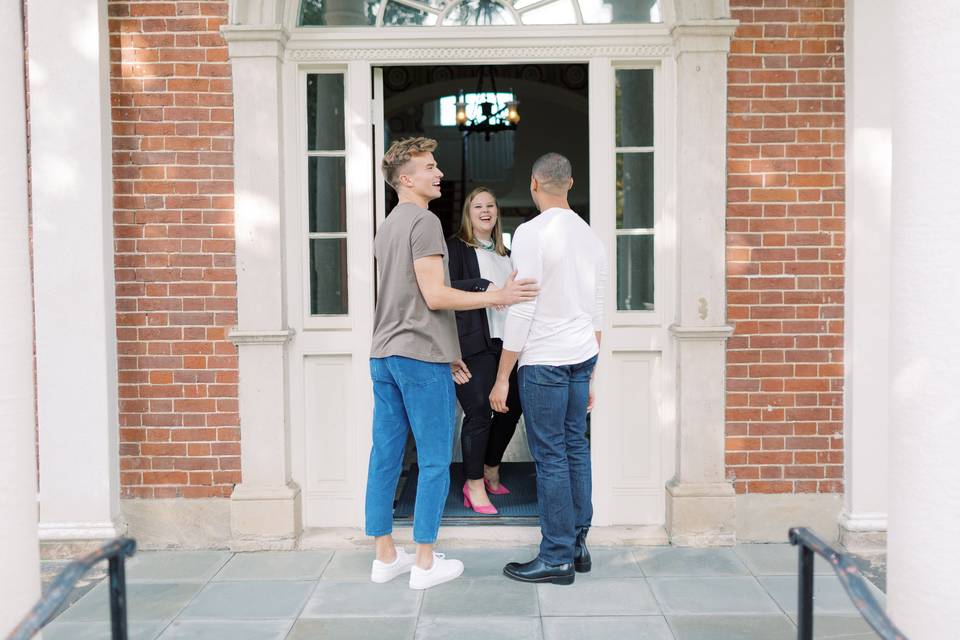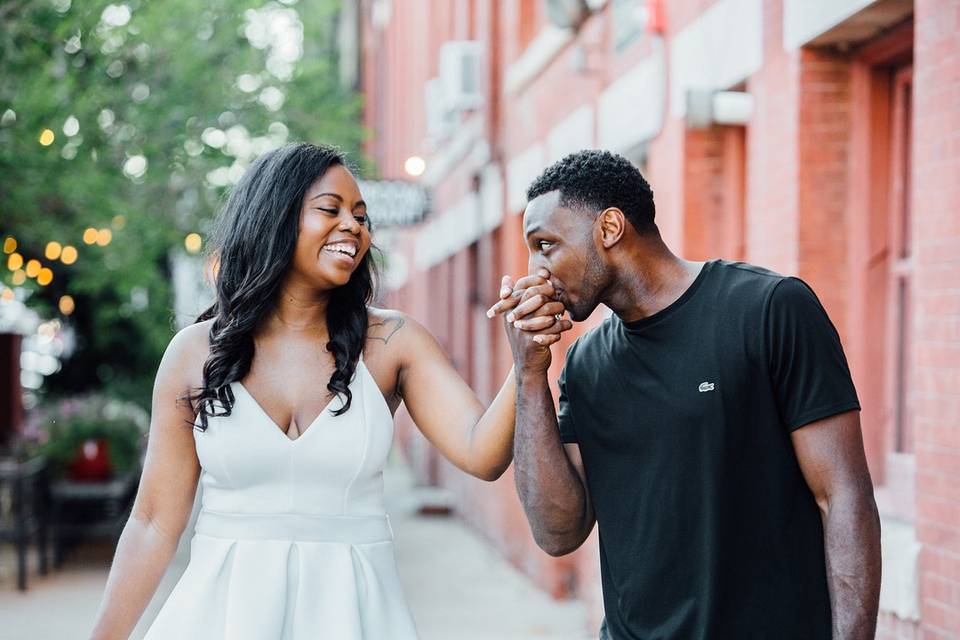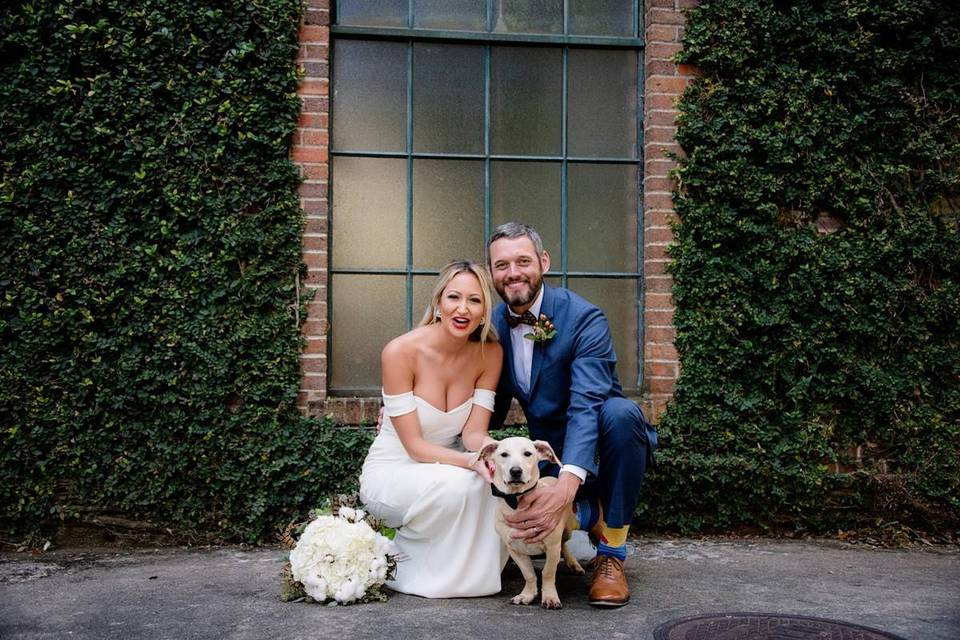9 Wedding Day Timeline Rules Every Couple Should Follow
Make sure your wedding runs as smoothly as possible with this wedding day timeline, expert advice, and a template you can use to create your own schedule.
We have included third party products to help you navigate and enjoy life’s biggest moments. Purchases made through links on this page may earn us a commission.
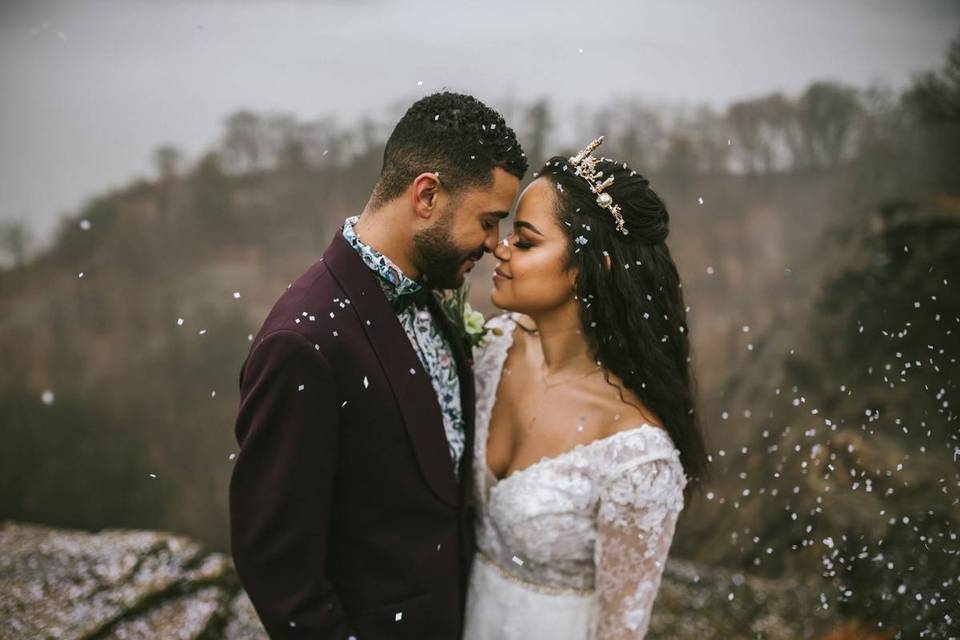
When it comes to your wedding, timing is everything! That’s why creating a wedding day timeline is absolutely vital — even running a few minutes late can throw the whole day off-track (and annoy your guests). Keep in mind though that each couple's wedding timeline will be unique to their own wedding day, and is dependent on vendors and venues and families and more, so be sure to work from scratch when creating your own wedding day timeline. (See tip #2!) That being said, there are some tried-and-true wedding day timeline secrets that, if followed, will help your big day run like clockwork. Check out these tips on creating a wedding day timeline.
1. Think about your wedding’s unique logistics.
There are several decisions you’ll need to make before you can start creating your wedding day timeline. If you can answer these questions, you’re probably ready to start creating your wedding schedule!
- Will you be getting ready at your ceremony location or somewhere else (like a hotel with a room block reserved for you and your guests)?
- Are your wedding ceremony and reception in separate locations? If so, you’ll have to factor travel time into your wedding timeline.
- Will you be providing transportation for your wedding party members and/or guests? If so, this can make travel a bit smoother and quicker.
- Are you planning on having a “first look” and doing photos pre-ceremony? Or would you rather wait until cocktail hour to do couple and group/family portraits?
- Do you want to take first look or wedding portraits at a specific time (i.e., "golden hour," the last hour of light before the sun goes down)?
- How long will your ceremony be? This will require a discussion with your officiant. While the average wedding ceremony is around 30 minutes, some religious ceremonies may take longer (for example, if you're having a full Catholic mass).
- Will your cocktail hour take place between the ceremony and reception or before the ceremony?
- Will you have a receiving line?
- Does your reception venue have a curfew or noise restrictions, meaning you’ll have to end the reception at a specific time? Your wedding reception timeline will be tighter if you have to end the party at a predetermined time.
- Are you doing a first dance, parent dances (such as the father-daughter dance and/or mother-son dance), or other ceremonial dances at your reception?
- How many toasts will you have? Will you do a cake cutting?
- Will you do the bouquet toss, garter toss, or other dance floor activities (shoe game, etc.)?
- How much time is included in your vendors’ contracts? How long will your photographers (DJ/band, videographer, etc.) be present at your wedding?
- Are you hosting an after-party or parties? Where will those take place and how will guests get there?
2. Start your wedding timeline from scratch.
Every wedding is different, so copying a wedding timeline template you found on the internet word-for-word is probably not going to work for your big day (of course you can use these templates as inspiration, though!). Start fresh, and use your ceremony time as a starting point. Make a list of all of the events (getting ready, photo sessions, cocktail hour, first dance) that need to happen before and after the ceremony and then determine how long each of these will take. You can then start to plot your wedding day agenda accordingly. Check out the sample wedding day timeline below as a guide (but again, don’t copy this verbatim for your wedding, just use it as a general guide to get a sense of how long certain events usually take):
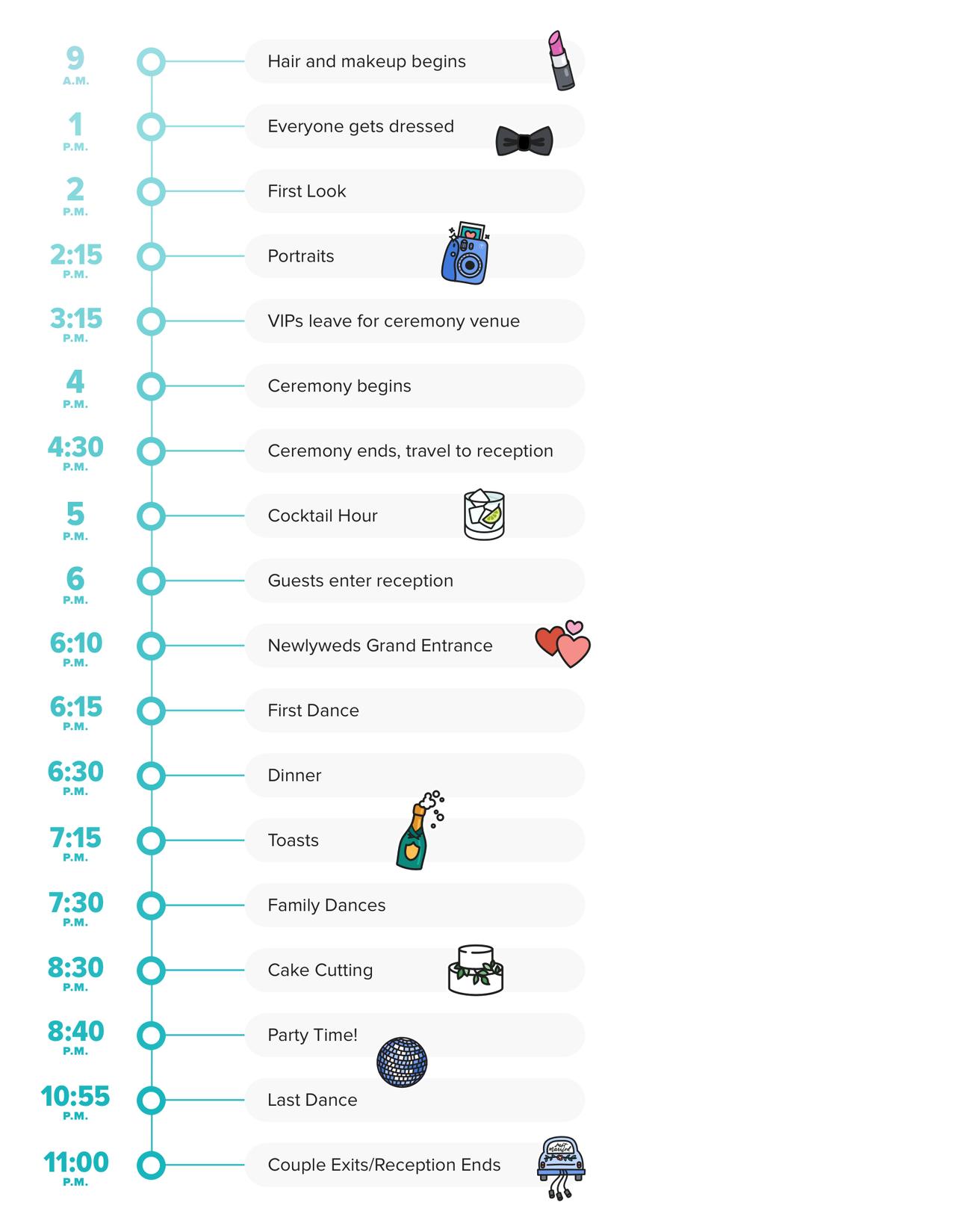
3. Start early. Like, really, really early.
Let’s face it, your wedding is going to be a long (but awesome!) day, and there’s no such thing as starting the getting-ready process too soon—particularly if you’re planning on taking photos before your ceremony. If your ceremony starts at 4 p.m., for example, we recommend starting to prep at around 9 a.m. Yes, it may seem insane to start that early for an evening wedding, but realize that it can take 90 minutes (or more!) for a bride to get her hair and makeup done. And if your bridesmaids are also getting their hair and makeup professionally done, that adds even more time to the equation. And an entire portrait session, including couple’s portraits and family photos will likely take over an hour, as well. Add more time if you’re planning on taking portraits at different locations! So yes, starting your wedding day as early as possible is a great idea and one you likely won't regret (even if it means cutting out of your rehearsal dinner a little early to get some shuteye!).
4. Talk to the wedding planning experts.
Wedding planners and venue event managers are usually the go-to sources to assist you in creating your “official” wedding day timeline. They'll have a good idea of how to plan out the day based on their experience, and know how to adjust your vision to fit the realities of time. You’ll also want to speak with your other vendors to find out how long they’ll need for set-up and prep so that you can schedule them accordingly and provide them with enough time to complete their tasks.
5. Add some buffers…
There are going to be some little (but important) details that you may forget to include in your wedding timeline—including eating breakfast (super-important!), signing the marriage license, and more. Your wedding planner or venue event manager should know what these are and can help you schedule them in, but make sure that your schedule allows for lots of cushion time. If there’s any form of transportation involved (to the ceremony or from the ceremony to the reception), be sure to allow at least a 15-minute buffer in case there’s unexpected traffic or other delays. You’ll be glad you planned ahead!
6. …but not on the invitation.
If you’re worried about your guests running late, it can be tempting to put an earlier ceremony start time on your invitation to ensure everyone arrives on time—or early. Our advice: Resist. The. Urge. Your guests will get annoyed if they arrive “on time” only to have to wait an extra 15 minutes or half-hour for the ceremony to begin (even more if you’re running late!). Instead, factor in an additional 5-10 minutes to your ceremony start time to give everyone a chance to find their seats and get settled. Also be sure to have ushers on hand to direct any late arrivals to their seats at an appropriate time after the ceremony has started.
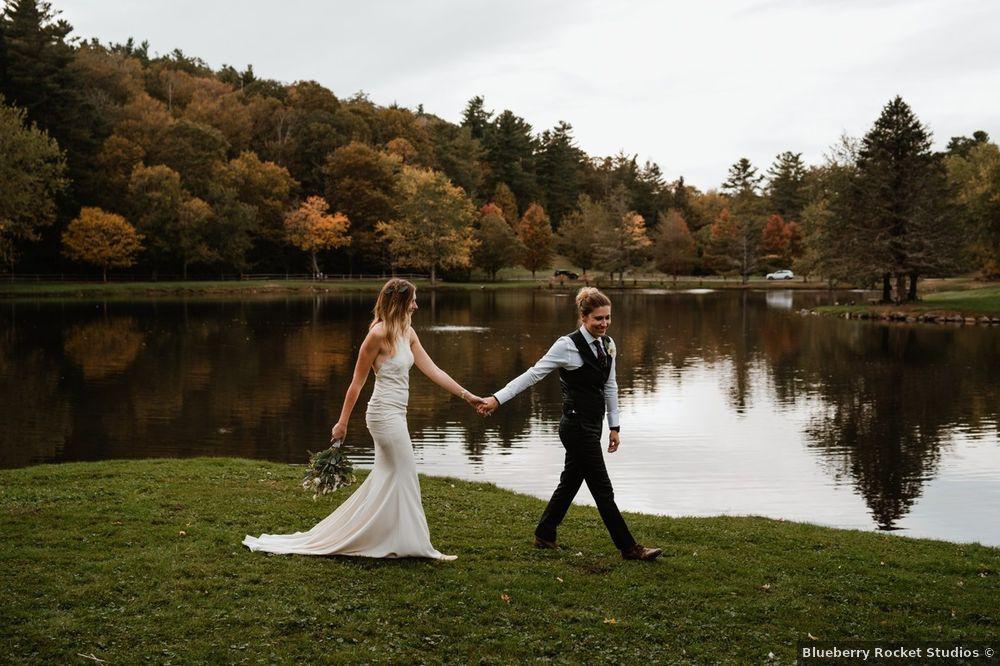
7. Remember your photographer and videographer.
Wedding photography packages usually include the number of hours your photographer and videographer will work on your wedding day—this is super-important. If you want your photographer to photograph your whole entire wedding day—including you and your crew getting ready — you'll need to pay for at least eight hours of coverage, and that may not even take your photographer to the very end of your reception. Think about how much time you have with your photographer and videographer, and when you'd like them to start and finish shooting on your big day. If you've paid for less than eight hours, you'll need to be strategic about when your photographer will start and finish and decide if it's more important for your photographer to shoot your getting-ready activities or the sparkler send-off at the end of the night. If desired, you can even stage a faux send-off an hour or two before your reception so your photographer can get those amazing newlywed photos within their time constraints.
8. Don't make guests wait to eat.
Even though your wedding guests will likely have just enjoyed cocktail hour, you shouldn’t make them wait too long before dinner is served (lest they get hangry!). Dinner should be served at most half an hour to 45 minutes after the reception begins. The way you serve your meal is up to you and your caterer and/or venue—but think about how you schedule the meal, the toasts, and the dancing portion of the evening. Will you stagger the courses and allow for dance breaks in between? Or serve the entire meal first and then start the dancing?
9. Distribute your wedding day timeline widely.
Your wedding day timeline should be formatted clearly and given to all of your vendors, including your caterer, photographer, videographer, DJ or band leader, ceremony musicians, hair stylist, makeup artist, and more, as well as any VIPs (family members, bridal party, etc.) the week of the wedding. That way, everyone knows where they are supposed to be and when. Be sure to email the timeline to your vendors a few days to a week before your wedding, and have printed copies of your timeline at the ready, too. On the day of your wedding, your wedding planner or event manager should be the “keeper of the timeline,” making sure things are running smoothly, but also enlist a family or wedding party member, such as the maid of honor and best man, to keep an eye on the clock and enforce the schedule.

